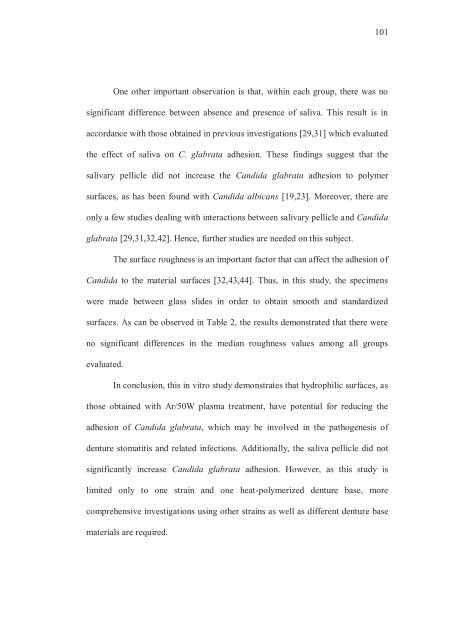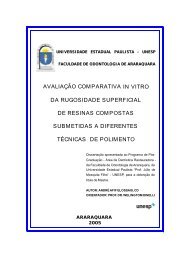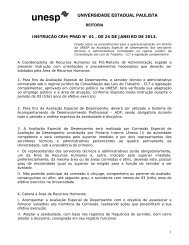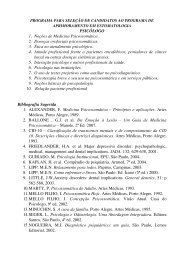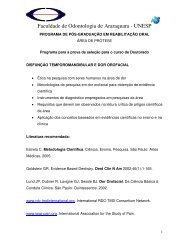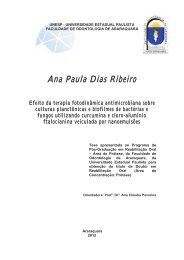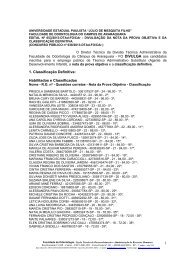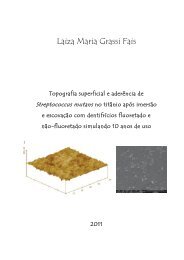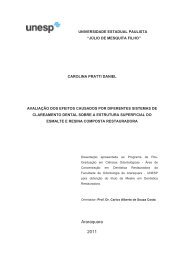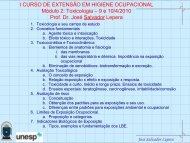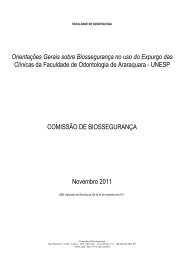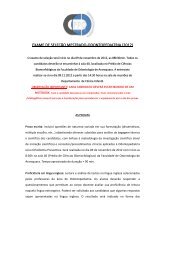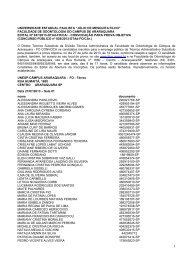universidade de são paulo - Faculdade de Odontologia - Unesp
universidade de são paulo - Faculdade de Odontologia - Unesp
universidade de são paulo - Faculdade de Odontologia - Unesp
Create successful ePaper yourself
Turn your PDF publications into a flip-book with our unique Google optimized e-Paper software.
101<br />
One other important observation is that, within each group, there was no<br />
significant difference between absence and presence of saliva. This result is in<br />
accordance with those obtained in previous investigations [29,31] which evaluated<br />
the effect of saliva on C. glabrata adhesion. These findings suggest that the<br />
salivary pellicle did not increase the Candida glabrata adhesion to polymer<br />
surfaces, as has been found with Candida albicans [19,23]. Moreover, there are<br />
only a few studies <strong>de</strong>aling with interactions between salivary pellicle and Candida<br />
glabrata [29,31,32,42]. Hence, further studies are nee<strong>de</strong>d on this subject.<br />
The surface roughness is an important factor that can affect the adhesion of<br />
Candida to the material surfaces [32,43,44]. Thus, in this study, the specimens<br />
were ma<strong>de</strong> between glass sli<strong>de</strong>s in or<strong>de</strong>r to obtain smooth and standardized<br />
surfaces. As can be observed in Table 2, the results <strong>de</strong>monstrated that there were<br />
no significant differences in the median roughness values among all groups<br />
evaluated.<br />
In conclusion, this in vitro study <strong>de</strong>monstrates that hydrophilic surfaces, as<br />
those obtained with Ar/50W plasma treatment, have potential for reducing the<br />
adhesion of Candida glabrata, which may be involved in the pathogenesis of<br />
<strong>de</strong>nture stomatitis and related infections. Additionally, the saliva pellicle did not<br />
significantly increase Candida glabrata adhesion. However, as this study is<br />
limited only to one strain and one heat-polymerized <strong>de</strong>nture base, more<br />
comprehensive investigations using other strains as well as different <strong>de</strong>nture base<br />
materials are required.


